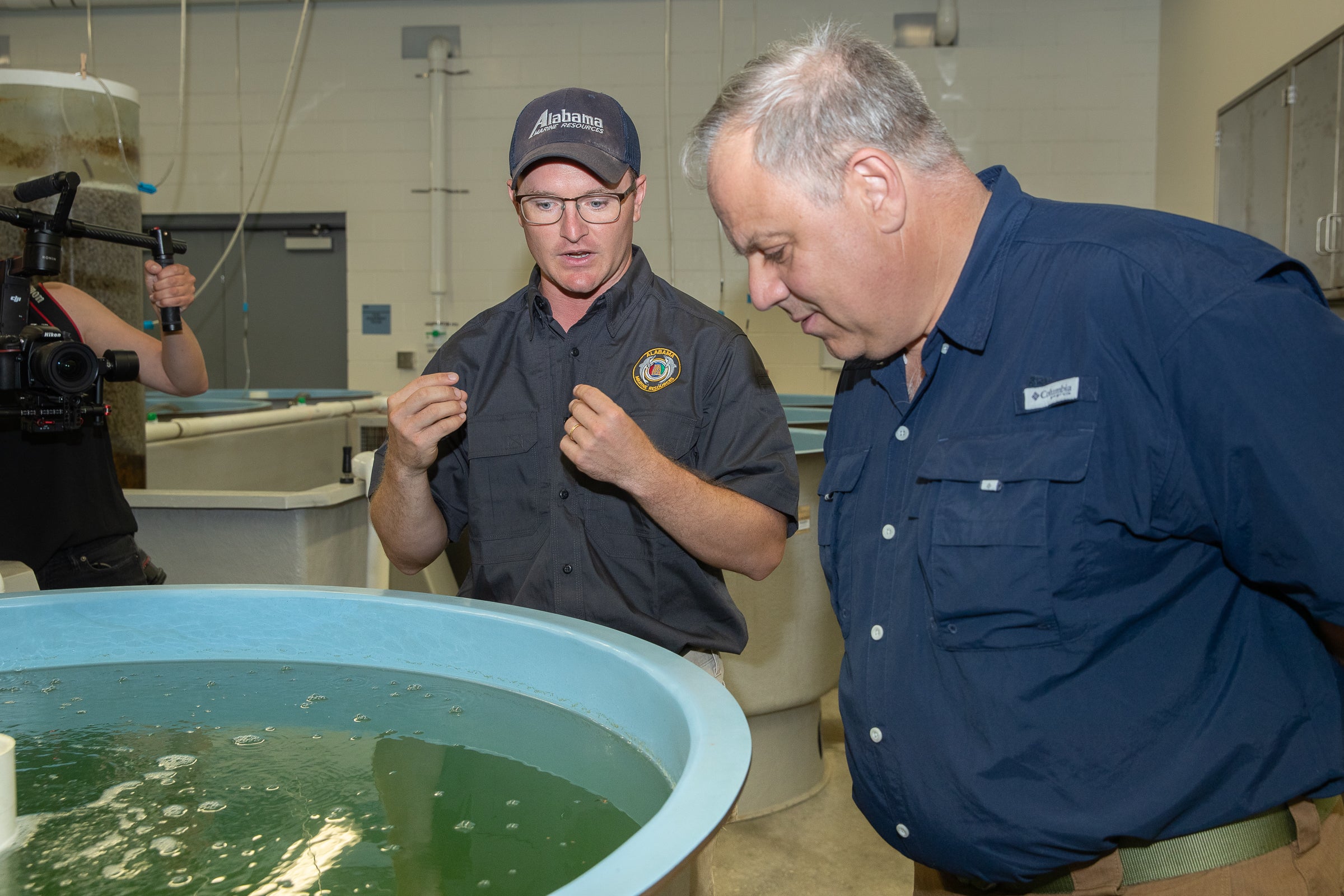By DAVID RAINER, Alabama Department of Conservation and Natural Resources
Opening America’s vast federal lands to outdoors recreational activity is the expressed goal of David Bernhardt, Secretary of the Department of the Interior, who visited Alabama’s Gulf Coast this week for a whirlwind tour.
Secretary Bernhardt heard a presentation about the mission and work of the Alabama Department of Conservation and Natural Resources (ADCNR) from Conservation Commissioner Chris Blankenship and followed with a tour of the Claude Peteet Mariculture Center in Gulf Shores. The Secretary then joined Alabama Congressman Bradley Byrne for a visit to the Bon Secour National Wildlife Refuge.
During his time in Gulf Shores, Secretary Bernhardt met with the different ADCNR Division Directors and Joey Dobbs, Alabama Conservation Advisory Board Chairman.
“I was on the Virginia Board of Fish and Game and I loved that experience,” Secretary Bernhardt said. “It’s democracy. It was the most satisfying public service experience of my life because of what you (fish and wildlife officials) do and to be able to look for practical solutions in wildlife management. We feel so strongly that states are where the leadership in wildlife is, and we’re doing everything we can to protect that. We have spent a lot of time in the last four years trying to make sure that line is clear.
“I just want you to know I have a special place in my heart for every wildlife and fisheries manager in the states.”
Commissioner Blankenship applauded Secretary Bernhardt and the Trump administration for expanding hunting and fishing opportunities on federal lands.
“We have a proposal to expand those opportunities on 2.3 million acres this year,” Secretary Bernhardt said. “On one hand, we’ve tried to expand access opportunities. On the other hand, we’ve really worked hard to line up our regulations with yours (the states). That’s a big priority. I think we have made 5,000 reg changes to make that alignment work, because you shouldn’t need a lawyer to go fishing or hunting.”
One of the ways the Secretary started the quest to open new public lands to hunting and fishing was to utilize the hunt and fish chiefs in the 10 regions of the U.S. Fish and Wildlife Service (USFWS), which is a part of the Department of the Interior.
“We directed those chiefs to work within their region to identify opportunities to expand hunting and fishing or find new opportunities to allow hunting and fishing,” he said. “For example, you may have the opportunity to hunt only squirrels. I asked them to look at the possibility of deer hunting.”
Secretary Bernhardt, who served as Deputy Secretary before becoming Secretary in April 2019, sent those hunt and fish chiefs to the respective wildlife and fisheries commissions in each state to identify ideas on expanding opportunities.
“Two years ago, we put out a rule to do that,” he said. “Our first year, we proposed (expanded hunting and fishing) on 385,000 acres. Last year, we added 1.7 million acres. This year it was 2.3 million acres. That’s over 4 million acres of new or expanded opportunities.
“For example, all of the Fish and Wildlife Service hatcheries had never been open to hunting. We had these vast spaces not open to hunting, but there was great wildlife there. We also asked each refuge manager to look at our rules and the states’ rules to see if we could line up seasons. As long as it made sense scientifically, facilitating access was really important.”
Secretary Bernhardt said hunters and anglers are the driving force behind conservation efforts through funding provided by hunting and fishing license sales and the excise taxes on firearms, ammunition, fishing tackle and other outdoor recreation items.
“The North American Wildlife Conservation Model, the most successful model on the planet, demands two things,” he said. “It requires that hunters and anglers are participating. Their activity is what really funds conservation. We want to do everything we can to make sure the future is bright for those resources to be there. We have very good science on managing our wildlife, but we have to have the participation of the people. So, we’ve tried to make things simpler. We’ve tried to make things more accessible.
“I’m a big believer that if people have access and opportunity, once you get them out there, you can never get them back. I take people out on my boat all the time. If I get them hooked, they’ll never tell me they don’t want to come next time. We do everything we can to get youth involved. At the end of the day, it’s going to take the collaboration of the state government and federal government to keep the public involved.”








